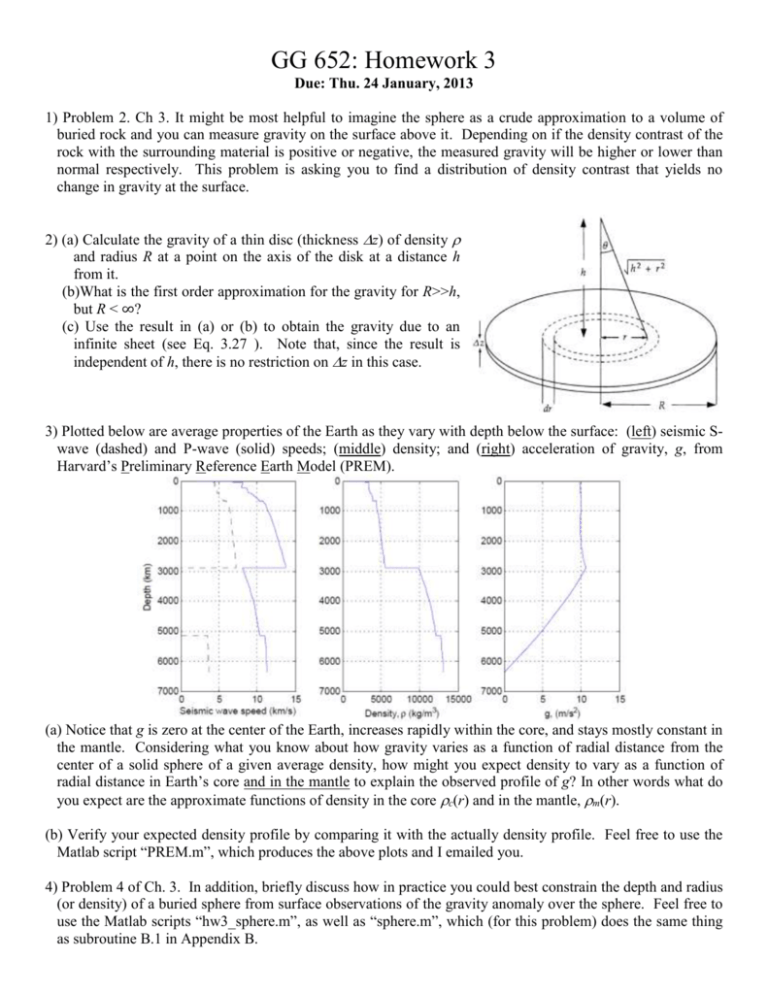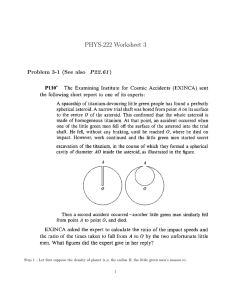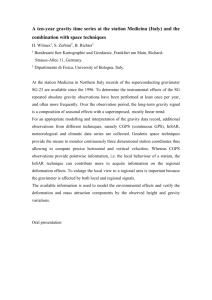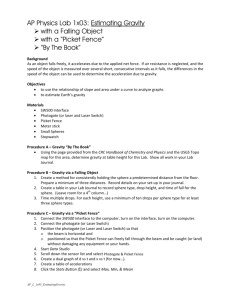HW3 - SOEST
advertisement

GG 652: Homework 3 Due: Thu. 24 January, 2013 1) Problem 2. Ch 3. It might be most helpful to imagine the sphere as a crude approximation to a volume of buried rock and you can measure gravity on the surface above it. Depending on if the density contrast of the rock with the surrounding material is positive or negative, the measured gravity will be higher or lower than normal respectively. This problem is asking you to find a distribution of density contrast that yields no change in gravity at the surface. 2) (a) Calculate the gravity of a thin disc (thickness z) of density and radius R at a point on the axis of the disk at a distance h from it. (b)What is the first order approximation for the gravity for R>>h, but R < ∞? (c) Use the result in (a) or (b) to obtain the gravity due to an infinite sheet (see Eq. 3.27 ). Note that, since the result is independent of h, there is no restriction on z in this case. 3) Plotted below are average properties of the Earth as they vary with depth below the surface: (left) seismic Swave (dashed) and P-wave (solid) speeds; (middle) density; and (right) acceleration of gravity, g, from Harvard’s Preliminary Reference Earth Model (PREM). (a) Notice that g is zero at the center of the Earth, increases rapidly within the core, and stays mostly constant in the mantle. Considering what you know about how gravity varies as a function of radial distance from the center of a solid sphere of a given average density, how might you expect density to vary as a function of radial distance in Earth’s core and in the mantle to explain the observed profile of g? In other words what do you expect are the approximate functions of density in the core c(r) and in the mantle, m(r). (b) Verify your expected density profile by comparing it with the actually density profile. Feel free to use the Matlab script “PREM.m”, which produces the above plots and I emailed you. 4) Problem 4 of Ch. 3. In addition, briefly discuss how in practice you could best constrain the depth and radius (or density) of a buried sphere from surface observations of the gravity anomaly over the sphere. Feel free to use the Matlab scripts “hw3_sphere.m”, as well as “sphere.m”, which (for this problem) does the same thing as subroutine B.1 in Appendix B.










